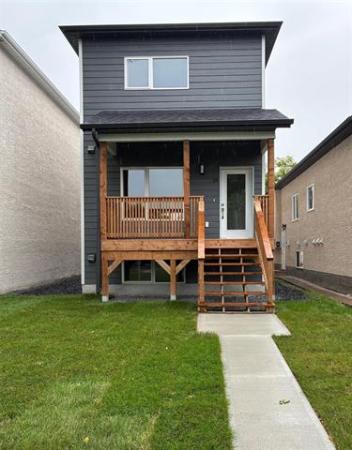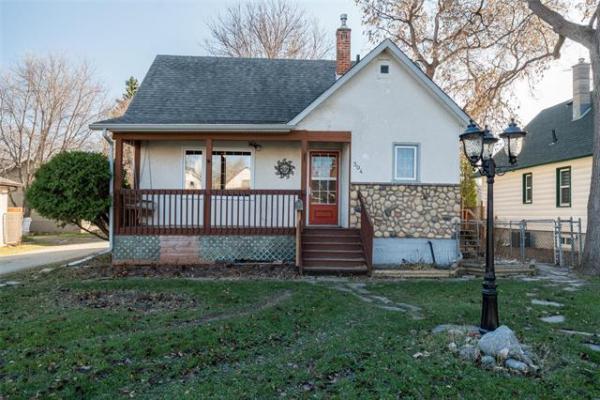Questions: I was hoping you would be able to guide me through my current home dilemma. Recently, my husband was looking behind our TV stand, thinking something had been shoved behind it. He noted that the flooring behind the stand was covered in moisture. To give you some perspective, the TV stand sits against an exterior wall of the house. There are no windows on this wall. The moisture appears to only sit near where the floor meets the wall, directly under the TV. We’ve wiped it and dried it as best as we can, but the moisture appears to return. I’m certain it’s linked to the cold weather. I haven’t noticed the issue near any other wall, and the wall on the outside seems unchanged. The inside humidity is sitting around 50 per cent. What could this be caused by and how do I stop it from happening? Thanks, Ash.
Answer: Moisture inside a home with no apparent reason is almost certainly caused by condensation of air in the home, when it contacts a surface cold enough to condense. The key to eliminating this issue is to maintain a lower relative humidity in the home, and better air circulation, to prevent this from reoccurring.
Despite answering an inquiry of a similar nature from a reader about a month ago, I felt this issue was so important to understand the mechanism behind the mysterious moisture, that I would address it again. The issue of condensation related moisture is definitely increasing in our homes, due to better tightening of the building enclosure, and greater efforts toward energy efficiency. The more airtight our homes become the more issues related to our indoor environment become prevalent.
To start this discussion, we should first address the scientific principles behind indoor air humidity issues. These basic facts tell us that the higher the amount of dissolved moisture in the air, the less temperature drop is needed for it to condense. This is often described as the dew point, which is the temperature at which water vapour will precipitate out from the air. So, a higher relative humidity (RH) inside the home will require a smaller temperature drop, or higher dew point, to form condensation on a colder surface. Maintaining lower RH in the indoor air will make condensation more infrequent, as much colder surfaces will be required for it to happen.
In our homes our daily routines produce a significant amount of moisture that becomes dissolved in the indoor air. This includes cooking, bathing, drying clothes, breathing, cleaning, and other normal daily activities. In older homes, with minimal insulation, poorly sealed windows and doors, and limited air/vapour barriers, this humid air would leak out to the exterior environment. Also, it would normally be replaced with colder, dryer air, which would leak in through the building enclosure in much the same manner. This replacement air, combined with the exfiltration of the humid air, will lower the indoor moisture content of the air. This will lower the RH in the home, preventing excess moisture issues.
In newer homes, or older homes that have been retrofitted with new windows and doors, increased attic and wall insulation, new furnaces, and other upgrades, the building enclosure no longer lets air in and out easily. Because of this, much more of the moisture produced by the occupants stays in the air, significantly raising the RH. As stated above, a higher RH raises the dewpoint, allowing condensation on a surface that is closer to the normal indoor temperature. For your home, this is the cold exterior wall or floor behind the TV stand. That area may be cooler because that location is letting in some cold air infiltration, or simply because it in contact with the cold outside environment. So, when the warm house air hits the floor or wall in that location, it reaches the dew point and condensation occurs on the cold surfaces. That may be happening in other areas, but the moisture may be easily reabsorbed into the air if there is good circulation. Because your cabinet is near the wall, there is limited air circulation, allowing the condensation to remain until it becomes problematic.
One part of the solution may be to pull the TV stand away from the exterior wall, to allow better airflow between the colder wall and the furniture. This may also warm the surfaces slightly, helping to prevent the condensation. Taking off the baseboard and caulking or blowing foam insulation into any gaps between the floor and wall plate can also help by preventing cold air leakage from outside. But, the main course of action to prevent the problem is to lower the RH in the indoor air. Fifty percent RH is way too high in the heating season, at normal room temperature. You will surely see water vapour on your windows in that situation, as well as other areas. Lowering the RH to a normal range of 30 – 35 percent in winter will significantly reduce the chance of a reoccurrence. This can often be accomplished by extended use of exhaust fans and the kitchen range hood, as long as they are all functioning and vented to the exterior. In more serious situations, installation of a heat recovery ventilator (HRV) with a dehumidistat control will allow you to maintain the lower RH simply be setting it accordingly.
Preventing moisture from accumulating behind your TV stand can be accomplished by lowering the RH in the home, which will improve the indoor air quality, overall. Sealing any drafty areas in the outside wall and moving the cabinet away from the wall will also improve air circulation, aiding quick evaporation and reabsorption of any small amounts of condensation that may occur before it causes damage.
Ari Marantz is the owner of Trained Eye Home Inspection Ltd. and a Registered Home Inspector (RHI)(cahpi.ca). Questions can be emailed to the address below. Ari can be reached at 204-291-5358 or check out his website at trainedeye.ca.
trainedeye@iname.com



